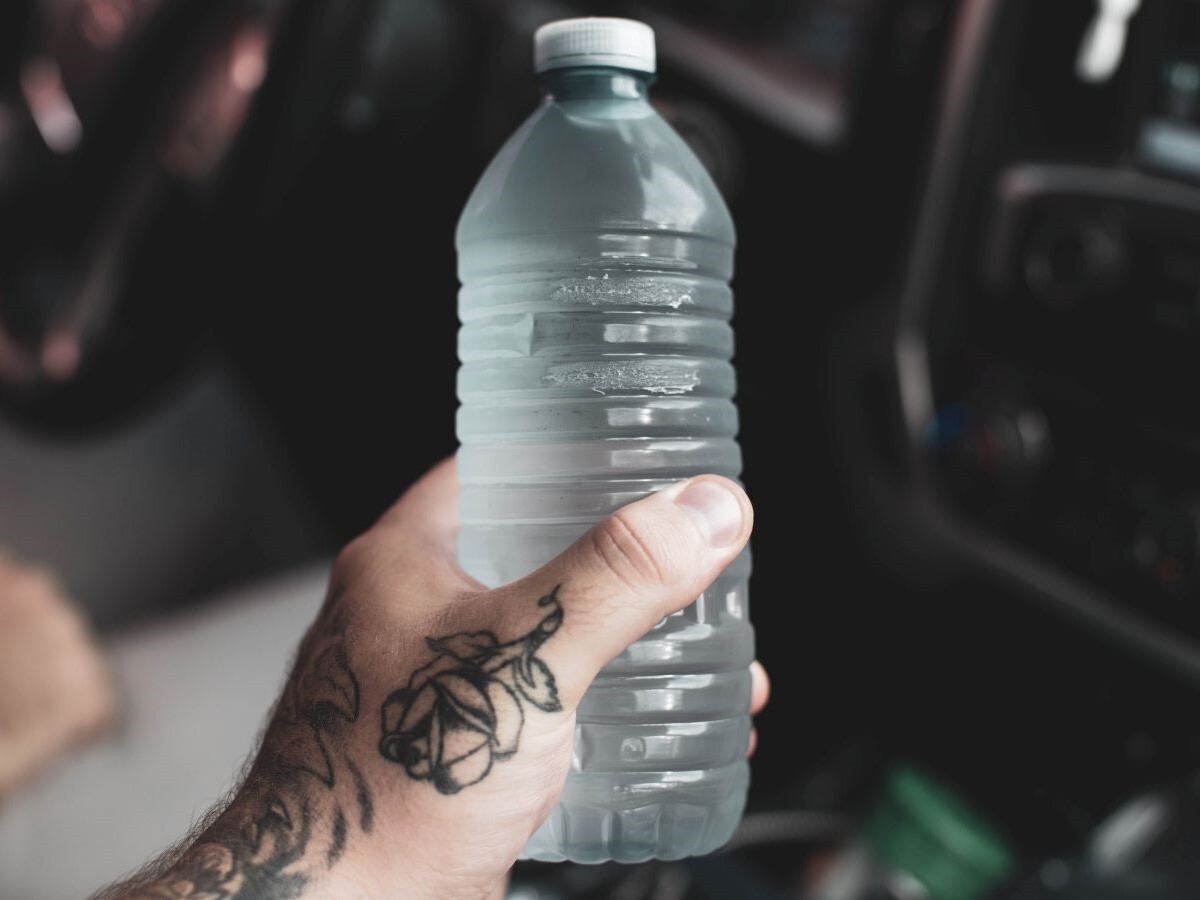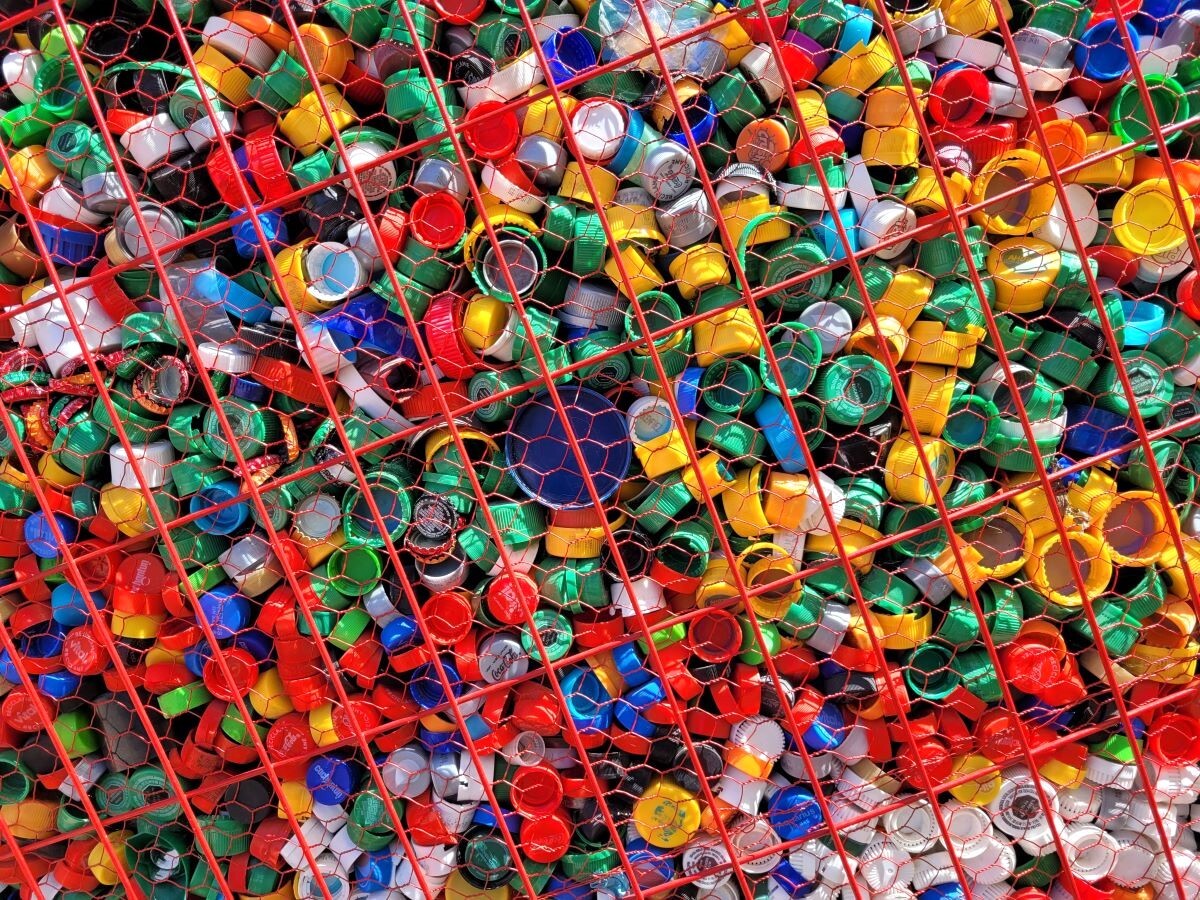What’s really in your plastics, and why that needs to change
As climate campaigners look towards the forthcoming plastics treaty with hope for greater circularity and less litter, a growing community of concerned scientists say the pact is urgently needed in order to deal with another matter: chemicals, and their rapidly emerging risks to human health.

It’s no secret that the world is facing an escalating waste problem, and that chief among the materials adding to Earth’s mountain of rubbish is plastic. According to environmental researchers, by 2040 an estimated 1.3 billion tonnes of the pervasive material will be littered across our lands and seas, posing an enormous threat to wildlife and ecosystems, and exacerbating the already destructive impacts of climate change. If the demand for plastic continues to grow at its current rate, greenhouse gas emissions from plastic production alone will reach 15% of global emissions by 2050.
But now, among the many established problems associated with plastics, a new focus is emerging, with scientists around the world warning that it’s not just the materials’ longevity, resource demand, pervasiveness in natural environments, or contribution to climate change that we need to be worrying about – it’s what plastics are actually made of, too. According to researchers in this field, the chemicals found in plastics stand to greatly exacerbate the already daunting task of securing the health of both people and planet, adding yet another layer of complexity to the sustainability challenge.
What goes into plastic?
In May 2023, the United Nations Environment Programme (Unep) released a technical report that “aims to inform the global community about the often-overlooked chemical-related issues of plastic pollution”. The report outlines the main components of plastic, including:
- Monomers and polymers, which constitute the main ‘building blocks’ of plastic material.
- Substances that act as catalysts to create the plastic in its production process, that remain in the material that’s sold.
- Small amounts of non-intentionally added substances, such as solvents, cleaning agents or impurities from manufacturing or recycling.
- Additives, which give the plastics specific properties and are the ingredients facing the most scrutiny regarding their safety.
Additives are used to ensure the plastic performs as intended. Plasticizers such as phthalates and chlorinated paraffins, for example, make plastic soft and flexible, while flame retardants such as brominated and chlorinated flame retardants are added to reduce the plastic’s flammability. Fillers such as mica, talc and clay, meanwhile, can add bulk without changing the plastic’s functional properties. Other additives include colourants, antioxidants, heat and light stabilisers, lubricants, and antistatic agents.
According to the Unep report, more than 13,000 substances have been associated with plastics, and over 3,200 have been flagged as ‘potential concerns’ for human and environmental health.

How do plastic additives affect health?
As plastic continues to permeate the planet – and has been found everywhere from remote arctic regions to the mountain clouds of Japan – an increasing body of research shows that the chemicals within pose worrying health risks to people and wildlife, including abnormal hormone functions, reduced fertility, hypertension and cardiovascular disease, as well as several kinds of cancer.
The Unep report states that these chemical additives are not bound to polymers within a plastic item, so they can be released throughout a product’s lifecycle. Evidence has shown that more than 500 types of chemicals can migrate from reusable plastic containers to the food they touch, while in ecosystems, biomagnification and bioaccumulation mean these toxic materials build up to affect the health of wildlife and impact the health of soils and waterways.
The drive towards a more circular economy is adding another challenge. The International Pollutants Elimination Network (Ipen) and Greenpeace released a report in May this year illustrating how hazardous plastic additives accumulate in recycled plastic, with analysis showing them in every recycled plastic children’s toy and hair accessory it examined. Other research suggests that the plastics recycling process itself can generate benzene, a human carcinogen.
This creates an impossible choice between recycling plastic and driving a toxicity overload, or avoiding recycling due to chemical concerns and adding to the growing waste pile.
Protection against toxic plastic
Despite these findings, the amount of deep-dive medical research in this space is limited, so it’s difficult to quantify the extent plastic chemicals are affecting health, their relationship with other diseases, and the impacts on specific vulnerable populations.
Studies showing health and environmental impacts of some additives, including certain phthalates, flame retardants, bisphenols, and others, has resulted in legislation banning or restricting their use. However, of the 13,000 chemicals commonly added to plastics, the Unep report states that only 128 are regulated internationally. There has also traditionally been limited cross-sector collaboration to enable a bigger picture approach to the challenge.
The Plastics Additive Initiative of 2016, for example, saw 21 industry sector organisations launch a joint project to characterise the uses of plastic additives and the extent to which the additives may be released from plastic items. The project – which lasted for two years – generated an overview of just 400 additives used in high volumes in the EU, and was designed chiefly to help companies prioritise the updating of safety communications throughout their supply chains.
Elsewhere, there have been some sector-specific efforts to address the problem. The European Commission has recently published a review of the Toy Safety Directive, for example, proposing a ban on the use of harmful chemicals, such as endocrine disruptors, in children’s products. The European Consumer Organisation notes, the enshrining of the proposal into law would represent “the first time ever – worldwide – that both known and suspected hormone-disrupting chemicals are banned from an entire product group”. But for multiple other industries, such chemicals would remain the norm.
However, focused efforts from concerned scientists means this could be set to change.

Turning the tide on plastic pollution
In March 2022, a UN Environment Assembly meeting resulted in a mandate for the creation of a Global Plastics Treaty to regulate the production, use and disposal of plastics. World leaders have until 2024 to reach an agreement that sets out legally-binding terms and how the agreement will be financed.
Since the Treaty’s announcement, scientists have made it clear that the eventual pact needs to tackle the problem of plastic additives and their impacts on health and the environment. In November 2022, 13 prominent scientists published an open letter in the journal Science calling for chemical additives to feature in the treaty, while a number of fringe events around negotiation sessions continued to keep the pressure on. German organisation HEJ Support, for example, gave a presentation at a side event focused on plastic pollution, toxicity and chemicals, and stated that “the identity of chemicals and polymers throughout material and product life cycle should be the foundation stones of the plastic treaty.”
Their efforts have since been successful, with the first draft of the Global Plastics Treaty – published in September – including measures to address ‘chemicals of concern’ at all stages of a plastic’s life cycle.
How will the Global Plastics Treaty tackle chemicals?
The Global Plastics Treaty draft provides three options to address chemicals and polymers of concern in plastics. The first option is the most robust and would require member countries to ‘eliminate’ chemicals and polymers of concern in plastic production. The second option offers a weaker approach, and its focus would be on minimising rather than eliminating chemicals of concern. The third option is the least protective, and would allow UN member countries to individually determine how to regulate these chemicals.
It’s not clear yet which approach will be adopted, but it seems unlikely that all member countries will agree on the most robust option, particularly when a number of key countries – such as the US and Saudi Arabia – want the treaty to focus predominantly on plastic circularity, rather than the components of plastic itself.
Nonetheless, transparency and data around the chemical make-up of plastics will be key in the roll-out of either of the three measures, and there’s already comprehensive work underway to support this.
In January 2024, the Norwegian University of Science and Technology (NTNU) is poised to release a highly-detailed, state-of-the-science report on hazardous chemicals in plastic, alongside a comprehensive PlastChem database. This database would give each chemical a hazard score, and assign it to a ‘black list’ (where it should not be used under any circumstances), or in decreasing order of risk: a red list, orange list or watch list (as the report’s authors state, no plastic chemical can be classified as ‘safe’).
Similarly, the American Chemistry Council (ACC) is said to be building a centralised database and risk framework that will serve as a single source of information on chemical additives used in commerce, and will help governments and scientists to evaluate the risk of additives and plastics to human health and the environment.
Work like this will help to simplify action for plastics manufacturers, and could potentially drive change across the board even if the least protective treaty measure was chosen. Such databases would give everyone full sight of the chemicals in plastic products across supply chains, enabling companies to make more informed decisions on who they do business with. If a manufacturer’s products are full of black, red or orange-scoring chemicals, they will soon become a less-desirable choice for their partners.
What’s next for chemicals in plastic?
The draft Global Plastics Treaty will be debated at the third session of the Intergovernmental Negotiating Committee (INC) in Nairobi, Kenya from 13-19 November. How prominently chemicals will feature on the agenda is yet to be seen, but with continued pressure from the scientific community and an increased consumer understanding of the health risks surrounding plastic, it will be a critical component of the treaty, whatever shape it takes. However, as anti-chemical campaigners are acutely aware, getting the topic into the treaty is just the beginning of their efforts. The hard work will continue when it’s time to start actively enforcing a step-change in the way we produce a material the whole world has become dependent upon.
Further reading
· 1.3 billion tonnes of plastic on Earth by 2040 · Unep’s Chemicals in Plastics report · Plastics found in the Arctic · Plastic found in Japan’s mountain clouds · Evidence for plastic chemical’s transmission from containers to food · IPEN and Greenpeace’s ‘Toxic Forever’ report · How recycling plastic can generate benzene · The Plastics Additive Initiative · Europe’s proposed ban on plastics chemicals in toys · Scientists’ open letter calling for chemical considerations in plastics treaty · HEJ Support’s look at chemicals within treaty negotiations · First draft of the Global Plastics Treaty · A first-look at NTNU’s January 2024 report on hazardous chemicals · The American Chemistry Council · The Intergovernmental Negotiating Committee on Plastic Pollution
|
Activate employees
Find out how OckiPro membership engages employees to deliver sustainability impact.
Get Involved
There are many ways to get involved with Ocki and its community. To find out more, click the button below
